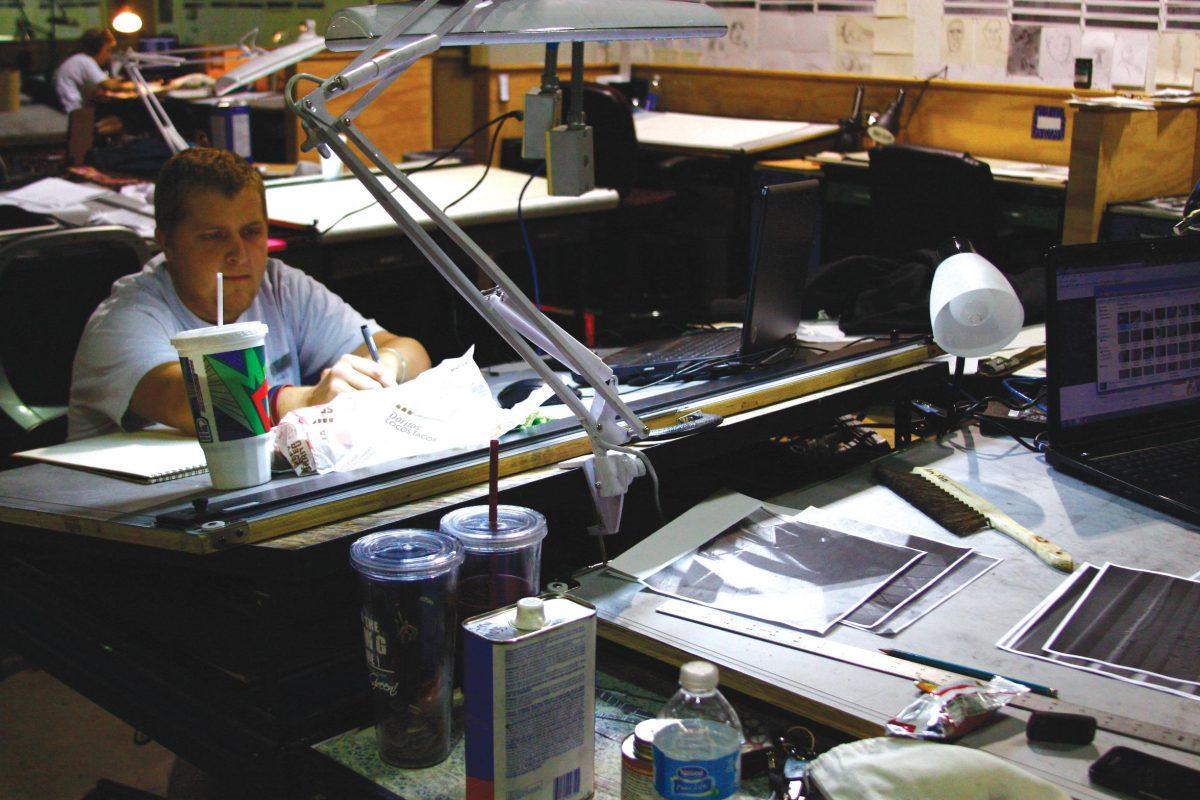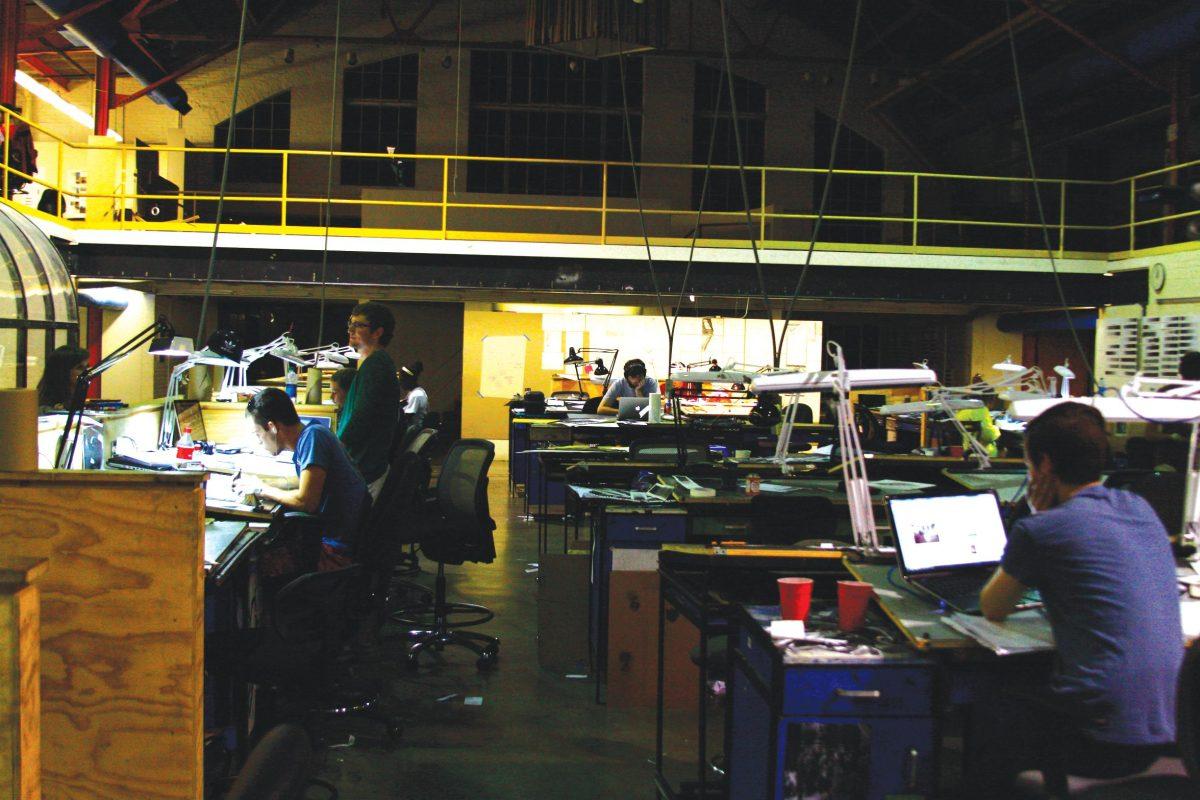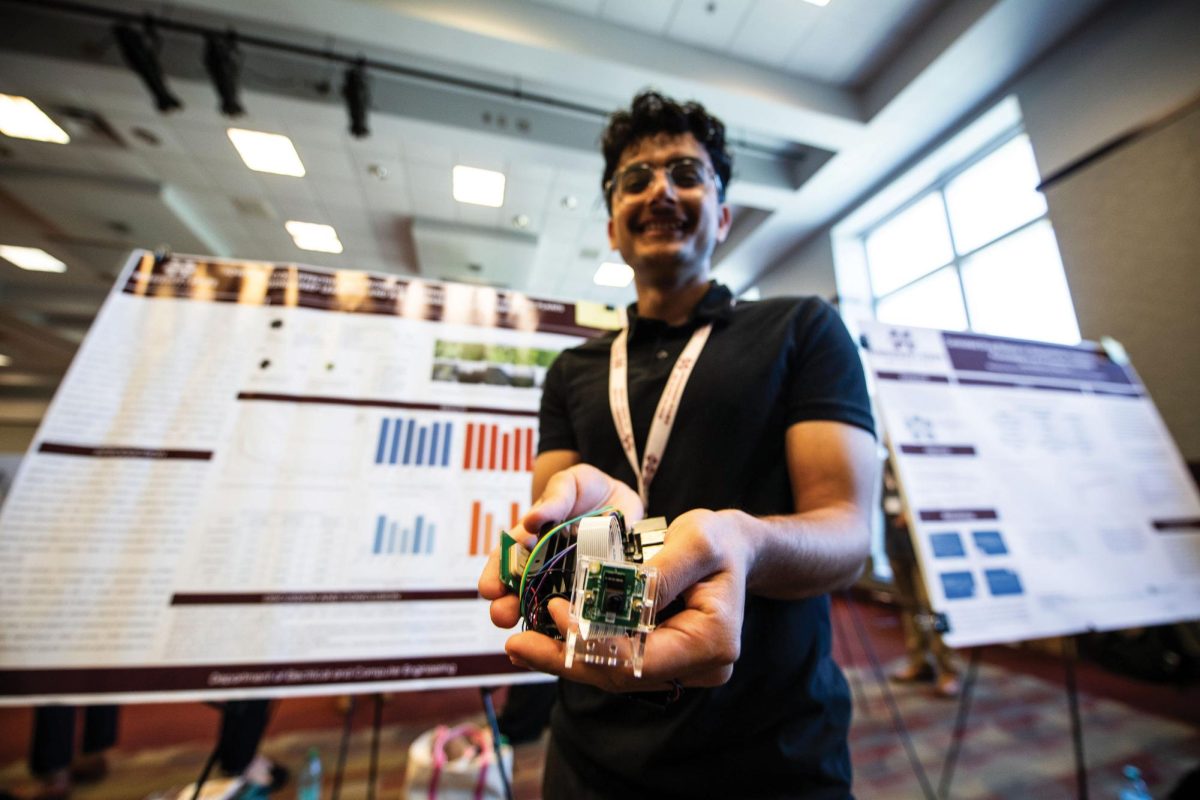I open my eyes. My alarm clock display screams 4:32 a.m. as I drag myself out of bed and exit my room to use the bathroom. I look down the hall and see both of my roommates’ doors are open, their rooms dark. They are still up doing schoolwork, although school just started two weeks ago.
They are architecture students.
On Aug. 20, as many students sat through reiterations of what was printed on the syllabus, Landon Kennedy, junior architecture major, said third-year architecture students began an intense redesign of Mississippi State University’s closed family-housing complex.
“Basically we had to start from scratch at Aiken Village and create a program, think about not only the architecture but how it affects the city and the school. We had only two weeks to get everything nailed down, finalized, designed,” he said.
The Architecture Design Studio, a six credit-hour course taken each semester of the five years required to receive a Bachelor’s of Architecture here, takes place from 1 p.m. to 5 p.m. every Monday, Wednesday and Friday. Kennedy said the class tends to function differently than normal lecture classes.
“Studio, a lot of times you don’t know what to expect. Sometimes it’s a work day and sometimes it’s strenuous, meeting with professors, having pin-ups and desk crits,” he said.
These long hours in class and seemingly infinite hours outside of class completing projects with harsh deadlines seem aligned with the myths surrounding Giles Hall: whispers of the lights always being on and students staying up all night with cots lining the halls.
These myths result from the misunderstanding (and workloads) associated with the nature of learning in a broad, expansive field such as architecture. Taylor Keefer, senior architecture major, shared reasoning for these intense hours.
“In architecture, there is not a correct answer. You just keep working, thinking and changing things until you arrive at a good project, and this process takes weeks, not hours,” she said.
In between flashes of photos of the juniors’ five-day field trip to Chicago, Ill., Jordan Hanson, junior architecture major, revealed his thoughts on the relationship between professors and what is learned in studio courses.
“The professors have different interpretations; you could be thrown into studios with professors that focus on different areas. It’s about creating the process,” he said
Clusters of drafting desks grouped by year level comprise the studios; third-year space is in The Barn (a converted, ancient, brick cattle barn) where cables dangle from the exposed metal structure painted in primary colors. David Lewis, junior architecture major, said the group environment the studios create is important, a community striving toward a common goal.
“The studio environment is fraternal in the sense that we go through something together; we have a shared struggle,” he said.
Kennedy said the community fostered by the studio allows these students to work through difficult problems without easily defined solutions.
“You’re never really done in architecture school. There’s not 30 problems, and you’re done. There’s always that issue: you could always continue working on a project, developing ideas. You get to final reviews and they tell you these are things you could change if you keep working on it, and you’re done with the semester,” he said.
In the time I spent with these architecture students, I noticed a bond between them; jokes shouted across the studio were commonplace, and a relaxed atmosphere pervaded this place of stressful deadlines. Hanson said they were still on a high from their field trip in Chicago.
“Field trips are like the light at the end of the tunnel. They give you a little bit of hope. Every time you go on one you remember why architecture gets you excited,” Hanson said.
Through the long hours (the lights are indeed often on all night) without sleep (no, there are not cots in Giles) filled with Kilimanjaro-sized workloads, these students keep each other focused and sane. Through the ambiguity and intensity, Keefer said the process has taught her an invaluable amount.
“I have learned so much more than I have expected to learn,” she said.
A student cannot ask for much more from college than that.









